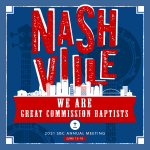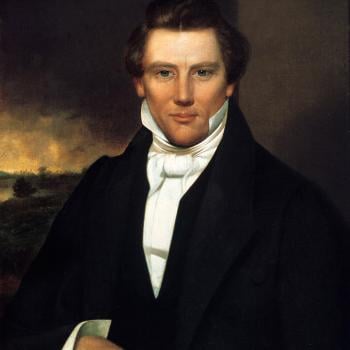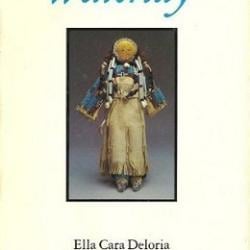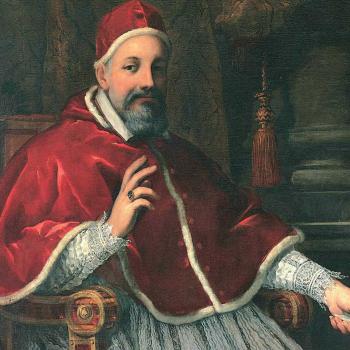Zachary Schrag is Professor of History at George Mason University. He is the author of several books, including a fantastic history of the Washingon, DC, metro system. We are pleased to welcome him to the Anxious Bench to discuss his most recent, The Fires of Philadelphia: Citizen-Soldiers, Nativists, and the 1844 Riots Over the Soul of a Nation, just released by Simon & Schuster. The book is a sobering reminder that nativism, religious bigotry, and uncertainty about the most effective and appropriate response to mob violence are not confined to the present but have deep roots within U.S. History.
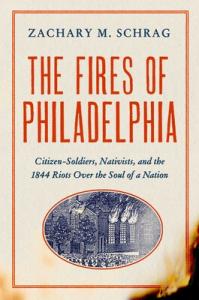 JT: Americans and others around the world recognized the significance of the 1844 Nativist Riots (sometimes called the Philadelphia Bible Riots) as they unfolded, but most of our readers will need a refresher on what happened. Can you give us a thumbnail of these events?
JT: Americans and others around the world recognized the significance of the 1844 Nativist Riots (sometimes called the Philadelphia Bible Riots) as they unfolded, but most of our readers will need a refresher on what happened. Can you give us a thumbnail of these events?
ZS: The nativist political movement—an effort to restrict the ability of immigrants to vote and hold office—began in New York City in 1835 and spread throughout the country, especially along the Atlantic seaboard. In 1844, Philadelphia nativists sought to build a political party by holding rallies throughout Philadelphia County. In May, a rally in the predominantly Irish Catholic Third Ward of Kensington, to the north of the city, sparked three days of rioting that led to the deaths of at least nine people and the destruction—by arson—of two Catholic churches. Eight weeks later, the violence resumed in Southwark, to the south of the city, when a nativist mob threatened a third Catholic church. This time, most of the fighting took place between nativists mobs and the volunteer militia, with both sides firing cannon. Another thirteen men were killed.
Prior to the violence, Protestants and Catholics in both New York and Philadelphia argued about the use of the Bible and the singing of hymns in the public schools. All agreed on the importance of the Bible, but Protestants insisted on the King James Version, while Catholics wanted their children to use the Douay translation, complete with notes. Nativists stoked the controversy as evidence of the danger of Irish Catholic immigration. In the twentieth century, some historians used the term “Bible Riots” to suggest that this argument had caused the fighting. But few people used that term in the 1840s, and a more proximate cause was the April 1844 election of a nativist as the mayor of New York City. That encouraged the Philadelphia nativists to mobilize. For this reason, I avoid the term “Bible Riots” in my own account.
JT: This wasn’t 1521. Both Protestants and Catholics professed to love the Bible and wanted American children to read it in English. So why were Protestants and Catholics at odds over Bible reading in public schools?
While disputes over the Bible were old, several factors were still new in the 1840s. Disestablishment in the United States and Catholic Emancipation in the British Empire led Catholics to hope for—and some Protestants to fear—greater Catholic equality in public life. Steam-powered printing presses allowed the American Bible Society and other groups to flood the country inexpensive Bibles. Perhaps most importantly, public schools were a relatively new institution. Catholics feared that Protestants would use them to convert their children, as some Protestants indeed hoped to do.
As we know from today’s debates over public-school curricula, it’s not easy for a diverse community to decide what their children should learn together. If you can’t agree on what your future citizens should believe, how can you educate them in a shared classroom?
JT: In 2021, we’re used to big cities having big well-funded police forces, and we’re used to governors mobilizing the National Guard to quell violence and potential violence. When violence between Nativists and Catholics erupted in May 1844 in Philadelphia, what tools did political leaders have at their disposal to stop it?
ZS: In 1844, what is now Philadelphia consisted of William Penn’s original city, just two square miles, with independent districts in to the north and south, though still within Philadelphia County. The city had only a small police force, and even that lacked jurisdiction to cross into Kensington or Southwark, where most of the fighting took place. The Sheriff of Philadelphia County could summon a posse of citizens, but bitter experience had shown that to be an unreliable tactic; in January 1843, the previous sheriff had been badly beaten by striking weavers when his posse abandoned him. That left the volunteer militia, more or less equivalent to today’s National Guard. In Pennsylvania and elsewhere, militia had responded to the growing number of riots since the early 1830s, but for the most part they had avoided firing their muskets.
The Philadelphia riots changed that, marking the beginning of decades of lethal militia deployments that lasted at least until the 1970 shootings at Kent State. They also encouraged the establishment of metropolitan police forces of the kind we know today, first in New York and then in Philadelphia. Only gradually did these professional police fill in as a force more reliable than ad hoc posses and—officials hoped—better suited to law enforcement than were troops.
JT: As you conclude, “Democracy walks a narrow path between military oppression and mob rule.” When reading The Fires of Philadelphia, it was hard not to think about mob violence in 2020 and early 2021. Your book is about 1844, not today. Still, are there lessons here for Americans uncertain about how authorities should respond to mobs?
ZS: Unfortunately, uncertainty may be the right response. In the aftermath of the riots and ever since, armchair observers have claimed that there’s some easy way to deal with rioters, usually either jawboning by a respected figure of authority, or a merciless volley of live ammunition that will deter all survivors. In fact, mobs may cheer popular politicians without ceasing their attacks on people and property, and Americans are reluctant to see troops or militarized police use deadly force against crowds.
Attempted technological fixes—such as tear gas—have reduced the death tolls without solving the basic dilemma. Democracy relies on public protest, but a few malfeasants can turn a peaceful march into a violent mob attack.
JT: In 1844, thousands of Philadelphians joined Nativist mobs. Catholic churches burned. One Philadelphia district even elected a Nativist editor (the scurrilous Lewis Levin) to a seat in the House of Representatives. Nativism didn’t go away by any means, but things calmed down, and the Native American Party died a quick death. Why?
ZS: The simplest answer is that third parties do poorly in the American political system, which relies on winner-take-all districts and, for the most part, ties local and national issues together. As a “Native American” in a Congress of Whigs and Democrats, Levin lacked the ability to pass bills or deliver patronage, so even he eventually had to ally with the Whigs. In the 1850s, as the Whig Party collapsed, nativists tried again, this time as the American Party, better remembered as the Know Nothings. Eventually, the new Republican Party recruited many nativists without delivering the harshest anti-immigrant policies that nativists wanted. As a political force, however, nativism has periodically reappeared from the 1880s through the present.
JT: One thing that really stood out to me in *The Fires of Philadelphia* is that you worked hard to establish a – pardon the expression – blow-by-blow chronicle of events by tracking down and sifting through newspaper articles and recollections by participants. Could you talk a bit about this process? Are there any lingering questions you wish you could resolve?
ZS: The investigators of the January 6, 2021, attack on the Capitol have the luxury and burden of hundreds of audio and video recordings of that dreadful day, which they can use to reconstruct a fairly exact chronology of at least some of the events. I had to rely on eyewitness accounts by people who could not agree on the order in which events took place, much less the precise time or place. I’m grateful to the eyewitnesses who explained their reasons for their estimates. One man, for instance, knew when his Sunday morning church service ended, so he could reliably estimate the time he heard the blast of a cannon that fired just as he was walking home. Still, I would be awfully interested to see some Facebook videos of July 7, 1844, to know how close I got to the correct sequence.
That said, a few years ago, I happened to see Tomáš Rafa’s film of a 2013 anti-Roma rally in České Budějovice, Czech Republic. Watching that nationalist march descend into a clash with police left me thinking I had, after all, seen footage of 1844 Philadelphia. Sometimes, the 1840s don’t seem so far away.


